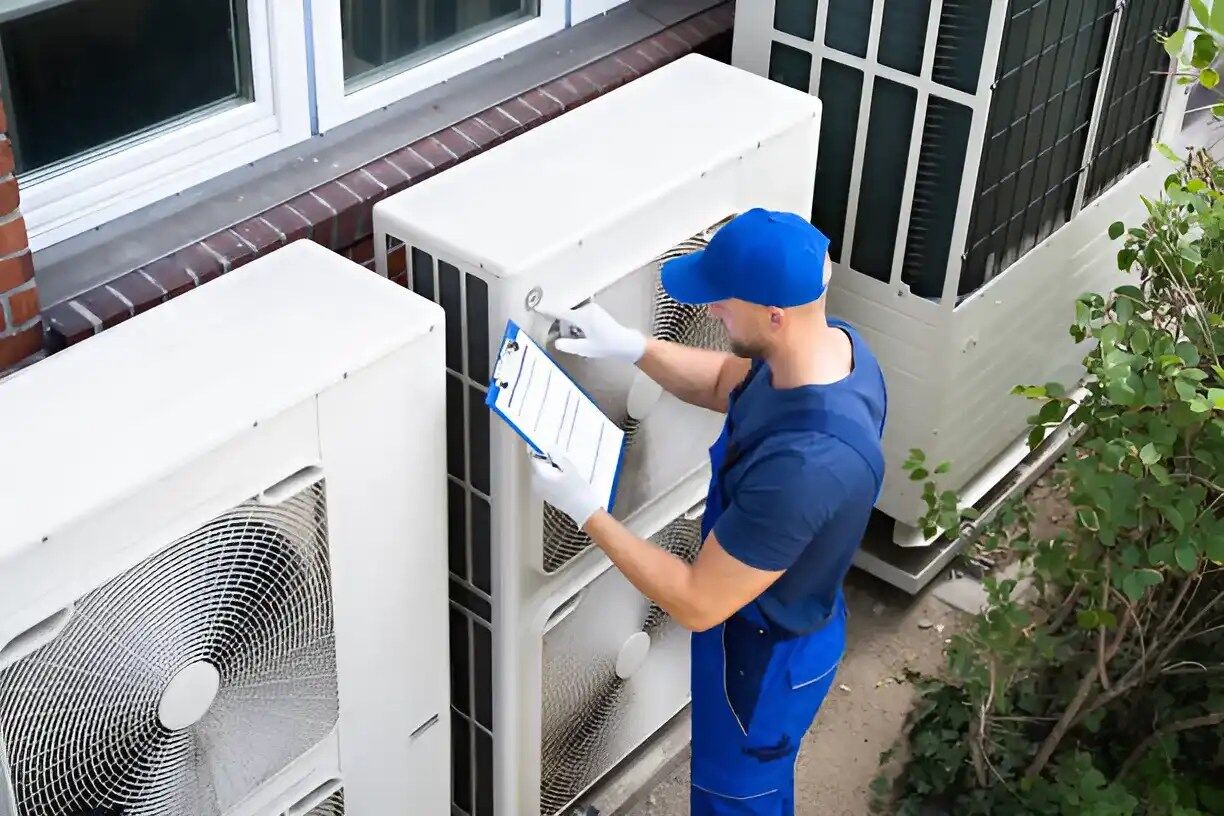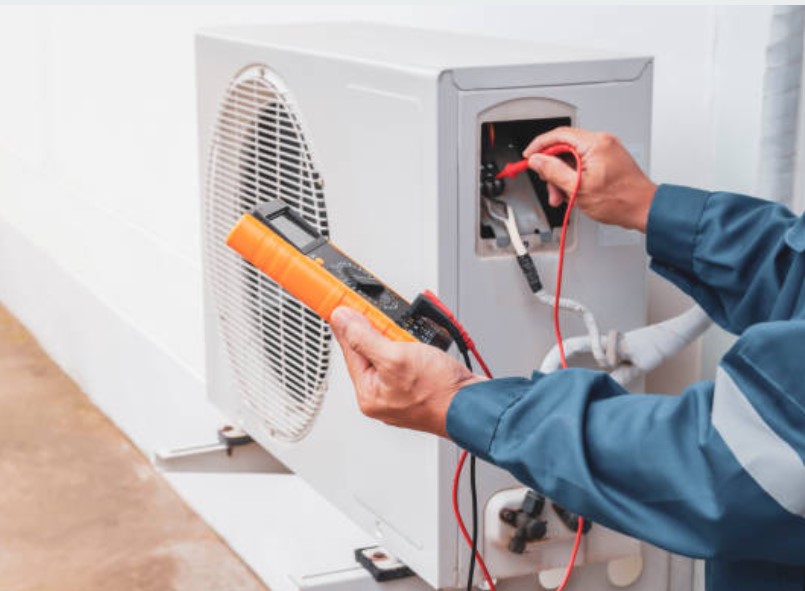Looking for a residential hvac company? We provide top-rated HVAC services.
Exactly How to Boost Power Effectiveness With Your Cooling And Heating System and Heater Upgrades
As energy costs continue to climb, the significance of boosting energy effectiveness via HVAC system and heater upgrades can not be overemphasized. Evaluating your present system's performance and taking into consideration energy-efficient options are essential primary steps. Along with selecting models with high SEER and AFUE scores, maximizing thermostat setups and improving insulation can considerably impact overall performance. The journey towards making the most of power performance doesn't finish there; recognizing the nuances of routine upkeep and its lasting benefits is similarly crucial. What are the certain techniques that can result in considerable financial savings and enhanced comfort?
Evaluate Your Current System
Before getting started on any kind of upgrades, it is necessary to analyze your current HVAC system and heating system to recognize their efficiency and performance. This first assessment provides a foundation for determining areas that call for improvement and informs decisions about potential upgrades. Begin by checking out the age of your cooling and heating system, as out-of-date versions might lack modern-day energy-saving functions.

Energy intake documents will also be important in determining your system's functional costs. Take into consideration conducting a specialist power audit to receive a professional analysis of your system's efficiency.
Upgrade to Energy-Efficient Models
Upgrading to energy-efficient models is a crucial step in improving the general performance of your a/c system and heater. These modern units are designed to consume less power while providing optimum cooling and heating, causing considerable price financial savings on utility bills and a reduced environmental impact.
When considering an upgrade, try to find models that have high Seasonal Power Efficiency Ratios (SEER) for cooling and Yearly Fuel Usage Effectiveness (AFUE) rankings for heaters. These scores show the performance of the units, with higher numbers showing better performance. Energy-efficient designs frequently integrate innovative innovations, such as variable-speed motors and smart thermostats, which even more enhance energy cost savings.
Additionally, many energy-efficient a/c systems are equipped with improved insulation and far better securing, which decrease energy loss and improve interior convenience. furnace repair. While the preliminary investment may be higher, the lasting financial savings on power expenses and possible tax motivations for utilizing energy-efficient appliances can offset this expense considerably

Inevitably, upgrading to energy-efficient designs not only adds to a much more view lasting future but likewise raises the comfort and effectiveness of your home or business.
Optimize System Settings
To make best use of the efficiency of your heating and cooling system and furnace, it is necessary to enhance system settings customized to your specific demands. Start by setting your thermostat to an energy-efficient temperature level. The U.S. Department of Power advises a winter season setting of 68 ° F when you are awake and lowering it while you sleep or are away. In summer, purpose for 78 ° F during the day.
Utilize programmable or clever thermostats that allow you to arrange temperature directory modifications automatically. This guarantees your system runs just when required, minimizing power intake. Additionally, make certain that your system is readied to run in the proper mode-- home heating in winter and air conditioning in summer season-- while avoiding the continuous fan choice unless needed for air flow.
Take into consideration zoning systems that enable personalized comfort in various locations of your home, additionally enhancing performance. By fine-tuning these settings, you can attain considerable power cost savings while preserving a comfy living atmosphere.
Improve Insulation and Sealing
A well-insulated home is key to making the most of the effectiveness of your a/c system and heater. Proper insulation reduces the workload on these systems, consequently preserving power and reducing energy expenses. Begin by examining your home's insulation in areas such as the attic room, wall surfaces, and floors. Insulation products like fiberglass, foam, and cellulose can significantly boost thermal resistance, aiding to maintain conditioned air inside and outside air out.
In addition to insulation, sealing voids and splits is essential. Pay unique focus to windows, doors, and any penetrations in walls, such as electric outlets and pipes fixtures. Weatherstripping and caulking can properly secure these openings, preventing drafts that compromise your heating and cooling effectiveness.
Furthermore, ensure that ducts are properly protected and sealed. Leaking ducts can cause significant energy losses, minimizing system efficiency. Making use of mastic sealer or steel tape to seal duct joints can improve air movement and efficiency.
Set Up Regular Maintenance
Routine maintenance of your heating and cooling system and furnace is vital for guaranteeing optimal performance and longevity. Arranged inspections and maintenance can identify potential concerns prior to they escalate, avoiding expensive repair services and ineffectiveness. Throughout maintenance, a certified technician will cleanse and replace filters, check cooling agent degrees, inspect ductwork for leaks, weblink and examine general system operation. This aggressive strategy not just enhances power efficiency yet additionally lengthens the life expectancy of your devices.
It is advised to arrange upkeep at the very least two times a year-- when in the springtime for the cooling system and as soon as in the loss for the home heating system. air conditioner repair. Regular maintenance aids keep constant indoor temperature levels, ensuring comfort throughout the year. Additionally, a well-kept system runs extra successfully, which can result in recognizable decreases in energy expenses
Disregarding maintenance can lead to decreased effectiveness, increased wear and tear, and ultimately, system failure. By prioritizing routine service, property owners can prevent unanticipated failures and ensure their heating and cooling system and furnace run at peak efficiency. Buying upkeep is an essential action in improving power effectiveness and developing a more lasting home environment.
Final Thought
Finally, improving power efficiency within cooling and heating systems and furnace upgrades is crucial for decreasing power consumption and enhancing total comfort. A methodical strategy that includes examining the current system, buying energy-efficient versions, optimizing settings, boosting insulation, and scheduling routine upkeep can lead to significant advantages. Implementing these techniques not just lowers energy expenses yet additionally contributes to a much more lasting setting, making it vital for home owners to focus on these upgrades.